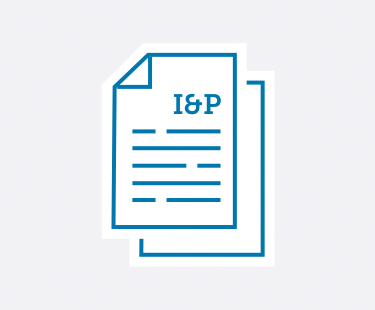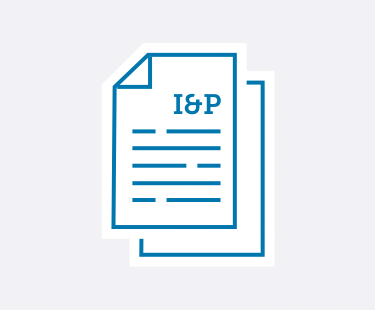

Learn practical strategies to handle emerging trends and leadership challenges in private schools.
No matter if you’re a School Head, Admission Director, Development Director, Board member, or any other private school administrator—Ideas & Perspectives®, ISM’s premier private school publication, has strategic solutions for the pervasive problems you face.
- Tuition not keeping pace with your expenses? In I&P, explore how to use strategic financial planning to create your budget and appropriately adjust your tuition.
- Enrollment dropping off? Discover how to implement the right admission and enrollment management strategies that engage your community—and fill your classrooms.
- Trouble retaining teachers? Learn how you can best support your teachers using ISM’s Comprehensive Faculty Development framework. Your faculty members will become more enthusiastic about their roles—which ultimately improves student outcomes.
- Fundraising campaigns not as successful as you’d hoped? Implement ISM’s practical advice and guidance to build a thriving annual fund, construct an effective capital campaign, and secure major donors—no matter your community size or location.
- Not sure how to provide professional development—for you and your staff? Learn ways to develop and fund a successful professional development strategy. You can improve teacher-centered satisfaction and growth, which in turn strengthens student-centered learning.
- Problematic schedule? You can master the challenges of scheduling with the help of ISM’s practical advice, based on our experience with hundreds of schools and our time-tested theories.
- And so much more.
I&P has shared targeted research, up-to-date insight, and sound theory with school leaders since 1975. More than 8,500 private school decision-makers find the answers to their schools’ administrative and governance matters in our advisory letter. We give you the strategic answers you need.
As an ISM Silver or Gold member, you not only receive issues online and in print 10 times a year, but you have access to 900+ articles in our web archive. Need help? It’s at your fingertips! Learn more and sign up for ISM's membership here.
Search
See the articles from our latest issue of Ideas & Perspectives.
The Headship: Are You Leading Yet?
Volume 35 No. 8 // June 9, 2010
William Johnson, CEO of the $10 billion food company H. J. Heinz, is quoted in Newsweek as follows: “I started out under the assumption that what got me to the position of CEO would work when I became CEO, and that is running the business and execution. That’s not my job as CEO. My job is to lead the people and manage the process. It took me a couple of years to learn that, and [when I did] I stepped back from the operations of the company and really began to focus on leadership, on having the right people in the right place, and on making sure people were properly motivated, incentivized, and directed.”1
1. Already a member? Click here to login.
2. Not a member? Click here to become a member.
3. Not sure? We'll help you figure it out.
Health Care Reform: What Schools Need to Know Now
Volume 35 No. 7 // May 10, 2010
In March 2010, Congress passed and the president signed into law the Patient Protection and Affordable Care Act (PPACA),1 one the most far-reaching pieces of federal legislation in decades. As the final version (amended by a reconciliation bill) is well over 2,000 pages and, importantly, is phased in over the next four years, it will take some time before all elements and consequences of the legislation are fully assessed. ISM will continue to write on PPACA as new provisions come into effect. At this time, however, we would like to share with schools the requirements and changes2 that they will need to comply with between now and the end of 2010.3
1. Already a member? Click here to login.
2. Not a member? Click here to become a member.
3. Not sure? We'll help you figure it out.
ISM’s Two Development Stability Markers: How Do You Score?
Volume 35 No. 7 // May 10, 2010
An essential element of accountability in the Development Office is the capacity to evaluate whether objectives are being achieved, and to measure progress toward those ends. The following table suggests a framework you can use to think through the metrics that define and measure success. You, as the Development Director, can use these metrics to analyze the state of your operations, to establish your baseline, and to assess your forward progress and communicate this to the School Head, the Board, and the school community. They will also aid you in planning and managing your operations.
1. Already a member? Click here to login.
2. Not a member? Click here to become a member.
3. Not sure? We'll help you figure it out.
ISM Stability Marker No. 1: Five Observations and Comments on ‘Cash Reserves’
Volume 35 No. 6 // April 19, 2010
Since ISM first began its quinquennial analysis of the prime correlates of a school’s ability to sustain excellence in its student programs—known as the ISM Stability Markers™ —the marker known as “cash reserves” has placed either first or second in each analysis. And while “cash reserves” is a convenient way to reference the item, this marker is actually a formulaic mix of reserves, (low or no) debt, and endowment. Now holding the top rank for the ninth straight year, reserves/debt/endowment is always a focal point of Trustees’ discussions—and properly so, as they move into strategic planning with ISM. Following are five observations and comments, each one grounded in Trustees’ questions and pertinent to ISM Stability Marker No. 1. You, as a leader on your Board of Trustees, are encouraged to think carefully through the implications of each of these five.
1. Already a member? Click here to login.
2. Not a member? Click here to become a member.
3. Not sure? We'll help you figure it out.
Influencing Upward: Skills for the Development Director
Volume 35 No. 6 // April 19, 2010
The relationship that you, as the Development/Advancement Director, have with your School Head can be a complicated and confusing one. There are five major reasons for this. Few Heads have any background in development. They tend to reach their position because of their academic background, not development experience. Few development people, on the other hand, have much background in education. They typically come from the nonprofit sector, or they start as parent volunteers and graduate to become staffers, with little formal training in the nuances of fund raising at private-independent schools.
1. Already a member? Click here to login.
2. Not a member? Click here to become a member.
3. Not sure? We'll help you figure it out.
The 21st Century School: Students and Individualized Instruction
Volume 35 No. 6 // April 19, 2010
In a previous I&P article, ISM focused on the use of technology to revolutionize the architecture that supports the delivery of education to students. In this article, we expand on the idea of individualizing instruction, and include an example from a student’s point of view. This leads to the fourth characteristic of 21st Century Schools noted in an earlier article—the individualization of the content and delivery of curriculum, meeting the needs and passions of the learner at the rate and speed best suited to that learner, using blended learning.
1. Already a member? Click here to login.
2. Not a member? Click here to become a member.
3. Not sure? We'll help you figure it out.
The Board Policy Manual
Volume 35 No. 5 // April 1, 2010
As President of your school’s Board of Trustees, you are always mindful of the need to perpetuate Board memory—historical information about the Board’s operations and activities. Even with reasonably effective new-member orientation and continuing, annual professional development of the Board, turnover will mean that, in a few years, the majority of the Board will rely on second-hand information about “how the Board does things.” That is, Trustees will not have experienced the passage of some pivotal Board policies and/or a discussion about the Board’s strategic operation. When they join the Board, the new Trustees will be relying on what they “heard” from the more experienced Board members.
1. Already a member? Click here to login.
2. Not a member? Click here to become a member.
3. Not sure? We'll help you figure it out.
The 21st Century School: Students
Volume 35 No. 5 // April 1, 2010
The 20th Century School treats learning in the same way an automobile manufacturer treats making cars. Every student (worker) is assigned particular times (clocking in) and places (workstations) where his/her teachers (supervisors) deliver common curricula (assembly lines) to meet commonly agreed standards (quality control). Teachers who attempt to make the “system” more humane and effective for students are in danger of stunting their careers and being considered troublemakers. Vaunted ideals of life-long learning, independence, and creativity so prized in students (at least in theory), are not as valued in teachers for whom conformity is a critical norm.
1. Already a member? Click here to login.
2. Not a member? Click here to become a member.
3. Not sure? We'll help you figure it out.
Influencing Upward: Advice for the Head’s Direct Reports
Volume 35 No. 5 // April 1, 2010
In thinking about your relationship as a direct report to your School Head, an essential career skill involves understanding how to influence upward. Whether you’ve known your Head for a long or short time, and however you came to your position, delivering the mission of the school to the students requires an effective relationship between you and the School Head. Reflecting on how you can effectively carry out your responsibilities is worthwhile. (From the Head’s point of view, this article may be helpful as you consider how to coach your direct reports—whether they are new to the business of management/leadership or experienced in their roles—so that they know your expectations.)
1. Already a member? Click here to login.
2. Not a member? Click here to become a member.
3. Not sure? We'll help you figure it out.
Scheduling and the Harried Teen
Volume 35 No. 4 // March 15, 2010
As the administrator in charge of the high school schedule, you have a moral responsibility. The schedule is not a neutral instrument, but one that dictates and sanctions the lives of children. Think about the way in which your students are living in your school—particularly the driven students.
1. Already a member? Click here to login.
2. Not a member? Click here to become a member.
3. Not sure? We'll help you figure it out.


